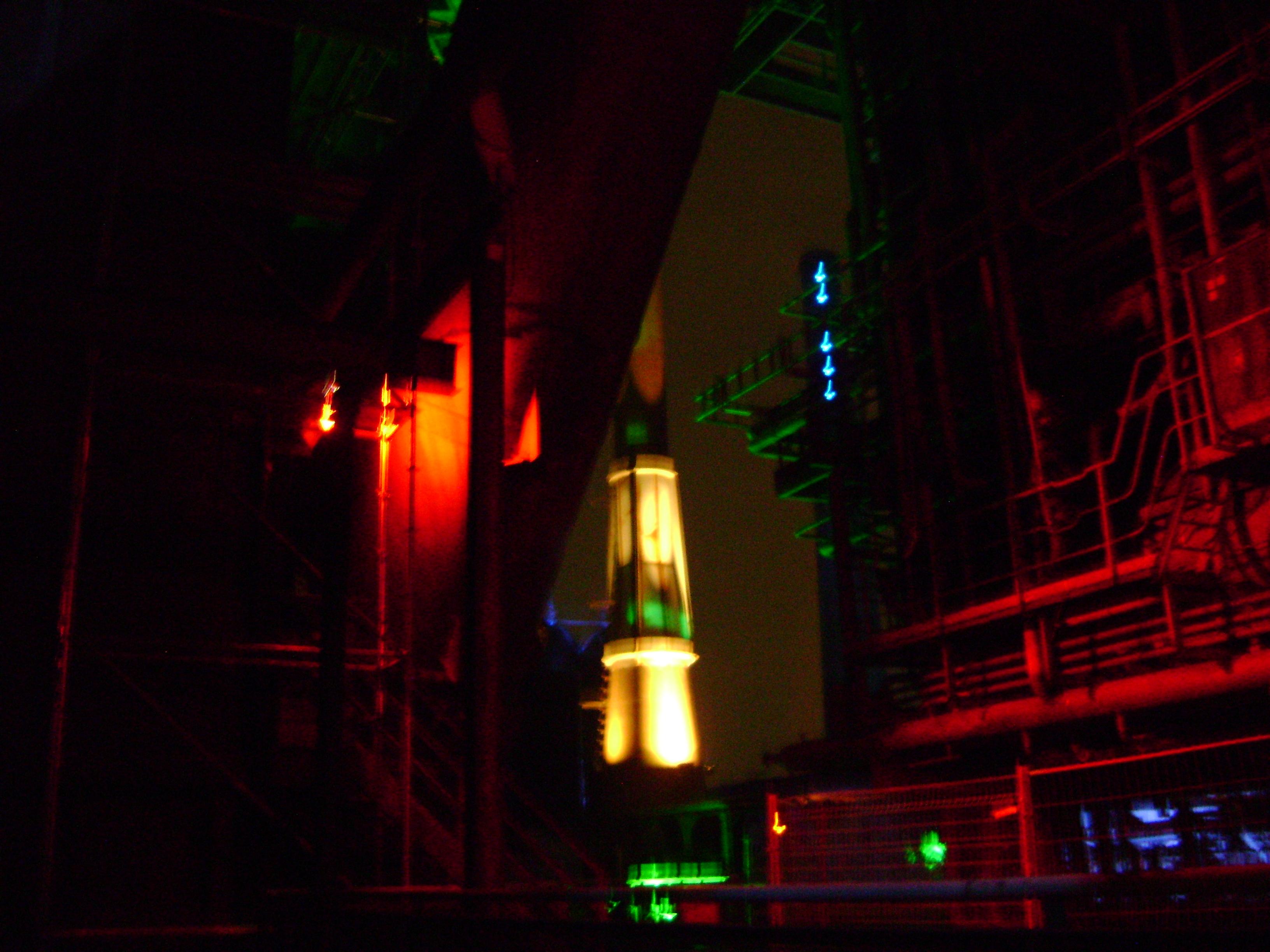
Rust in time: Rhur industrial heritage trail
WHO would have thought a rusting closed down steelworks, coal mine or gasometer in Germany’s Ruhr would be on the tourist trail as we increasingly value industrial architecture? The former heavy industry powerhouse has preserved some of the best examples of it economic heritage and saved them from the bulldozer to be replaced by retail parks. The Ruhr region has been transformed from slag heaps and smoke-belching ugliness to a green, leisure-based landscape that include the vibrant cities and towns of Bochum, Dortmund, Duisburg and Essen.

Winding gear reflected in the engine room windows at Zollern Colliery, Dortmund
True, this is not a region to come and look for pretty villages and old civic buildings. Rather, it is an area to be visited to discover what can be done in a physical landscape that was forged in a pre-digital age but is developing in a post heavy industrial era. Anyone with an eye for the power, grandeur and, yes, beauty of such architecture would be hard-pressed to find a more rewarding destination.
In 2010 the Ruhr received a major stimulus when efforts to revitalise the region after half a century of decline was recognised by being named European City of Culture – the first time the accolade has been given to a region rather than one city.
The area is full of surprised. Where else would you find people in wetsuits waddling across a car park towards a vast gasometer, a gas storage unit 170 metres tall and the second highest in the world, that has been turned into a dive centre? Another, at Oberhausen, has beenn adapted for an unique art space, housing vast works such as a huge walk-in balloon, created by the artist Christo, famous for wrapping buildings like Berlin’s Reichstag.
That unexpected diving centre is on the 200 hectare North Duisburg Landscape Park (Duisburg-Nord Landschaftspark) and is just one of a range of vast structures in this decommissioned iron smelting works given alternative uses, including climbing walls on the now redundant industrial sized buildings. By day you can see birds, rare newts and other endangered wildlife, finding new habitats among the rusting ironmongery. Once darkness falls you can walk around and climb over the former blast furnaces that are illuminated with a permanent light-show by Jonathan Park. You can even enjoy dinner at a restaurant in another converted industrial building, the Hauptschalthaus.

 Gothic architecture for a Ruhr colliery
Gothic architecture for a Ruhr colliery
While some structures have new lives, other industrial giants have been kept in a form of stasis, such as the vast Hansa coking plant at Dortmund, now a historical monument. You can now walk up along the now silent beltway that carried millions of tonnes of anthracite from nearby collieries to be turned into coke and coking gas for the steel plants and other industries. History is also brought to life at the UNESCO World Heritage Zollverein Coal Mine, at Essen, once the world’s largest colliery. Its washery building alone houses the Ruhr Museum more than 6,000 exhibits creating a memory and display window of the Ruhr Metropolis, tracing the development of the coal industry, the history of the Ruhr, including its importance in Germany’s industrial and military ambitions. Other buildings, such as the Jahrhunderthalle in Bochum, have been turned into a vast venue for concerts and exhibitions. Under the main building tunnels are being rediscovered where industrial activity continued while bombs rained down on this crucial element in Germany’s World War Two military machine.

 Heavy machinary now in situ museum pieces
Heavy machinary now in situ museum pieces
Arriving at the Zeche Zollern at Dortmund and only the two winding gear towers let you know this is a coal mine as the rest of the ornate architecture would have you believe you are at a castle or an Ivy League university campus. Enter the main buildings of this “mansion of labour” and you are in neo-gothic halls with ornate stained glass, carvings, wooden vaulted ceilings, where, not surprisingly, you are more likely to come across a wedding party than a coal miner. Behind this glorious symmetrical collection of buildings is Germany’s most famous industrial monument, a massive engine house, designed by Bruno Mehring, boasting a beautiful Art Nouveau entrance.
Wartime bombing destroyed much of the Ruhr and while you will find smaller villages and pre war architecture, it is the modern buildings that now catch the eye, such as the Kuppersmuhle Musuem in Duisburg, with a fine collection of German modern art, while you are always near lively evening café, bar and restaurant nightlife. Bochum iseems to be particularly popular for its bars and restaurants. From the coal and steel workers to today’s tourists, beer has always been a large part of the region’s culture (along with football). The heritage bug has struck here too. In Dortmund, for example, even the old brewery building, which has the city’s symbol, a giant illuminated U, on its top, has been saved from demolition and transformed into an arts complex.
Go at the right time of the year and you can always do as the generations of industrial workers did in their free time and the local population still does and grab a currywurst or other type of German grilled sausage and then head for a sunny beer garden.
For more information of the region, festival and cultural events, accommodation and travel possibilities contact the German National Tourism Board. www.germany.travel/en/index.html
Mike Smith travelled to Dusiburg via Frankfurt airport with Lufthansa and Deutsche Bahn. Lufthansa flies to Frankfurt from a range of UK airports including London, Birmingham, Manchester, Edinburgh, Glasgow and Aberdeen, and connecting with the Deutsche Bahn rail network. www.lufthansa.com and www.bahn.de
